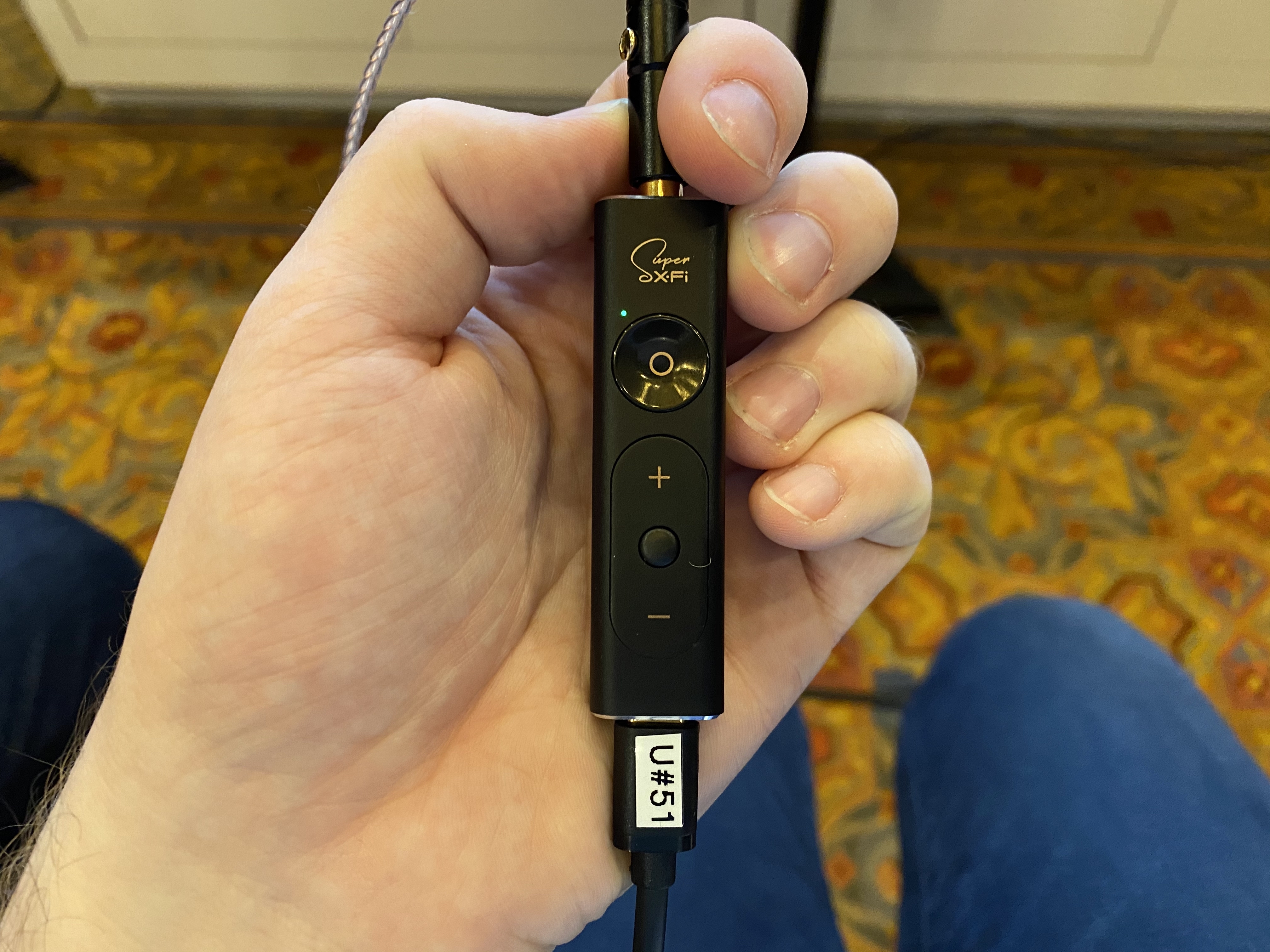Creative Audio's amazing virtual surround sound made me feel like I was hallucinating
Creative’s Super X-Fi Gen 2 will convince you that your headphones contain multiple full-size speakers.

LAS VEGAS -- Creative Audio makes a variety of audio equipment, from headphones and earbuds to PC sound cards to soundbars. However, what really caught my attention from my tour of its products at CES 2020 was in fact its software -- specifically Super X-Fi Gen 2, which legitimately had me believing I’d suddenly developed an auditory hallucination.
Super X-Fi (shortened to SXFI) uses what Creative calls “Headphone Holography” technology, an AI-enhanced surround sound experience which Creative originally debuted at CES 2019. The most recent version, Gen 2, is what I got to sample in a short demo at CES, and in short it’s the most convincing virtual surround sound experience I’ve ever had.
After preparing a custom hearing profile for me and the other media members present (in our case with small in-ear microphones, but there’s also a mobile app version which uses pictures of your ear to figure out a profile for you), Creative had us don an open-back pair of Creative’s E-Mu headphones with a SXFI amp ($149) attached.
This box, about the size of a cigarette lighter, takes a 3.5mm aux jack from your headphones, and then connects to your device of choice via USB-C. It means the total length of cable is quite long, but this is a small sacrifice to make for top notch audio.
The demo then began with a computerized voice listing off the speakers that made up the 7.1 surround sound set-up in the demo room, moving from right to left, which we could hear through the open backs of the headphones we were wearing.
This seemed fairly normal to start with, except then the demo leader invited us to take off the headphones. I did so and was met with silence. Creative had tricked us into believing that the speakers were producing the sound, but instead it was the SXFI-enhanced headphones. Me and my fellow journalists all made various noises indicating shock, surprise and delight, even those who were familiar with the original version of SXFI from last year.

The demo then went through several sample videos to show us what SXFI was capable of. We watched a fun fight scene in a bamboo forest from House of Flying Daggers, part of a Motorball game from Alita, Battle Angel, a sample of Mongolian heavy metal (now my new favorite genre of music) and finally the opening verse and chorus of the Rolling Stones’ Satisfaction.
Get instant access to breaking news, the hottest reviews, great deals and helpful tips.
All sounded excellent through the SXFI-amplified headphones, although the two music tracks must be praised particularly. The heavy metal was natively a stereo recording, and in the Rolling Stones’ case a mono recording, but SXFI was able to make these otherwise flat recordings sound much larger, doing justice to the work of these talented musicians.
You can get SXFI with a huge variety of Creative’s products. You can buy the amp I was using for this demo, headphones with a in-built amp (named SXFI-Wire) such as the upcoming SXFI Trio wired earbuds, or headphones with the app-enabled software version like the Aurvana SXFI Trio neckband wireless earbuds. Gamers should pay particular attention to the upcoming SXFI Gamer headphones, which use a customized version of this software that’s been tuned for FPS games, helping you pick out enemies before you even see them on-screen.
If you’re after a more stationary experience, there’s also a USB dongle for use with your TV or monitor in the case of SXFI Theater ‘phones, a computer amp for PC or Mac in the case of the Sound Blaster X3 amp, or the SXFI Carrier soundbar, which uses Dolby Atmos for normal playback, but can use SXFI when you plug in headphones for a viewing experience that’s less obtrusive for people who don’t want to watch what you’ve put on, but still sounds big and exciting.
So whichever format you want it in, you too can sample Creative’s amazing virtual surround sound. And also believe that you’re hearing things.
Be sure to check out our CES 2020 hub for the latest news and hands-on impressions out of Las Vegas.

Richard is based in London, covering news, reviews and how-tos for phones, tablets, gaming, and whatever else people need advice on. Following on from his MA in Magazine Journalism at the University of Sheffield, he's also written for WIRED U.K., The Register and Creative Bloq. When not at work, he's likely thinking about how to brew the perfect cup of specialty coffee.
